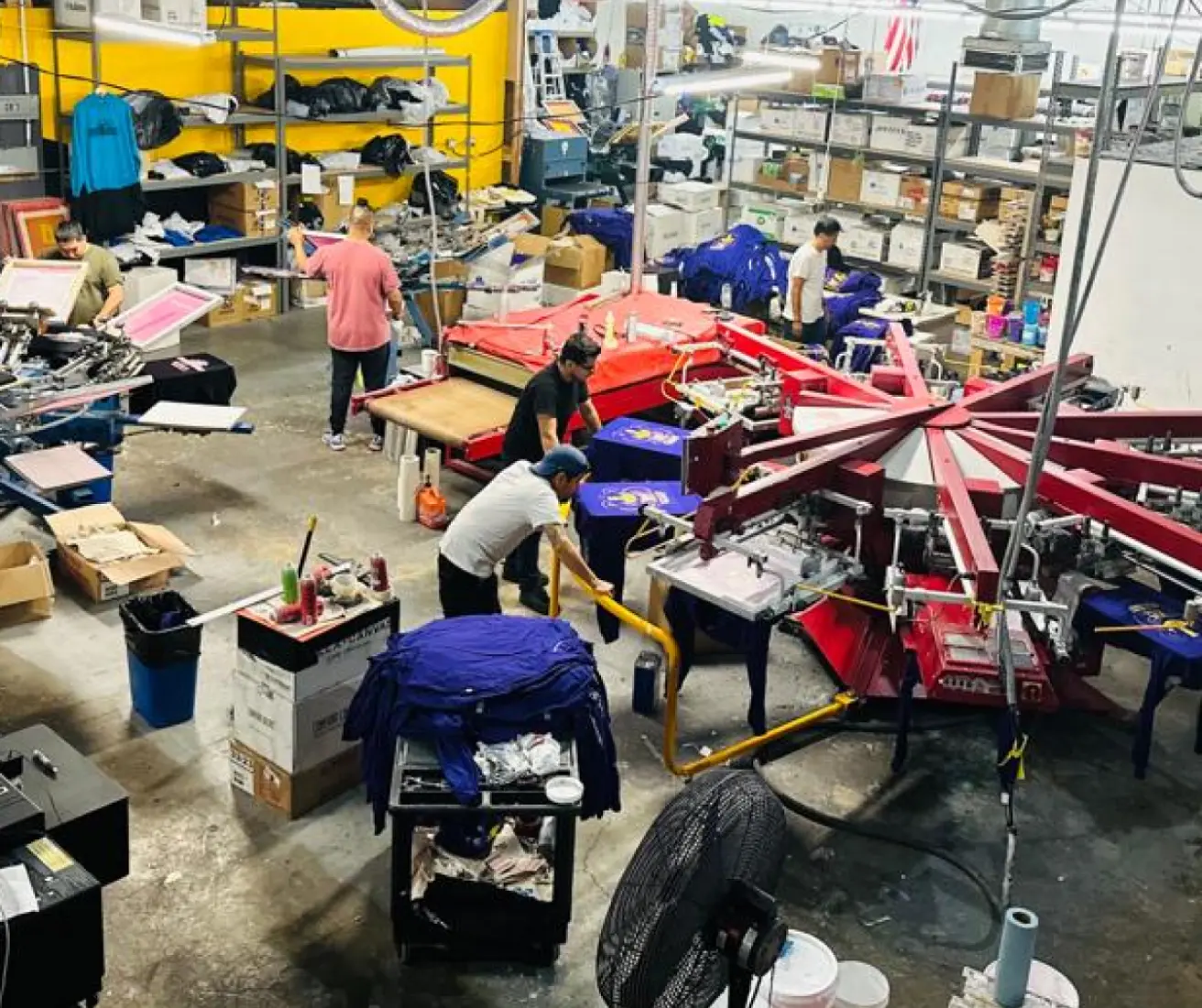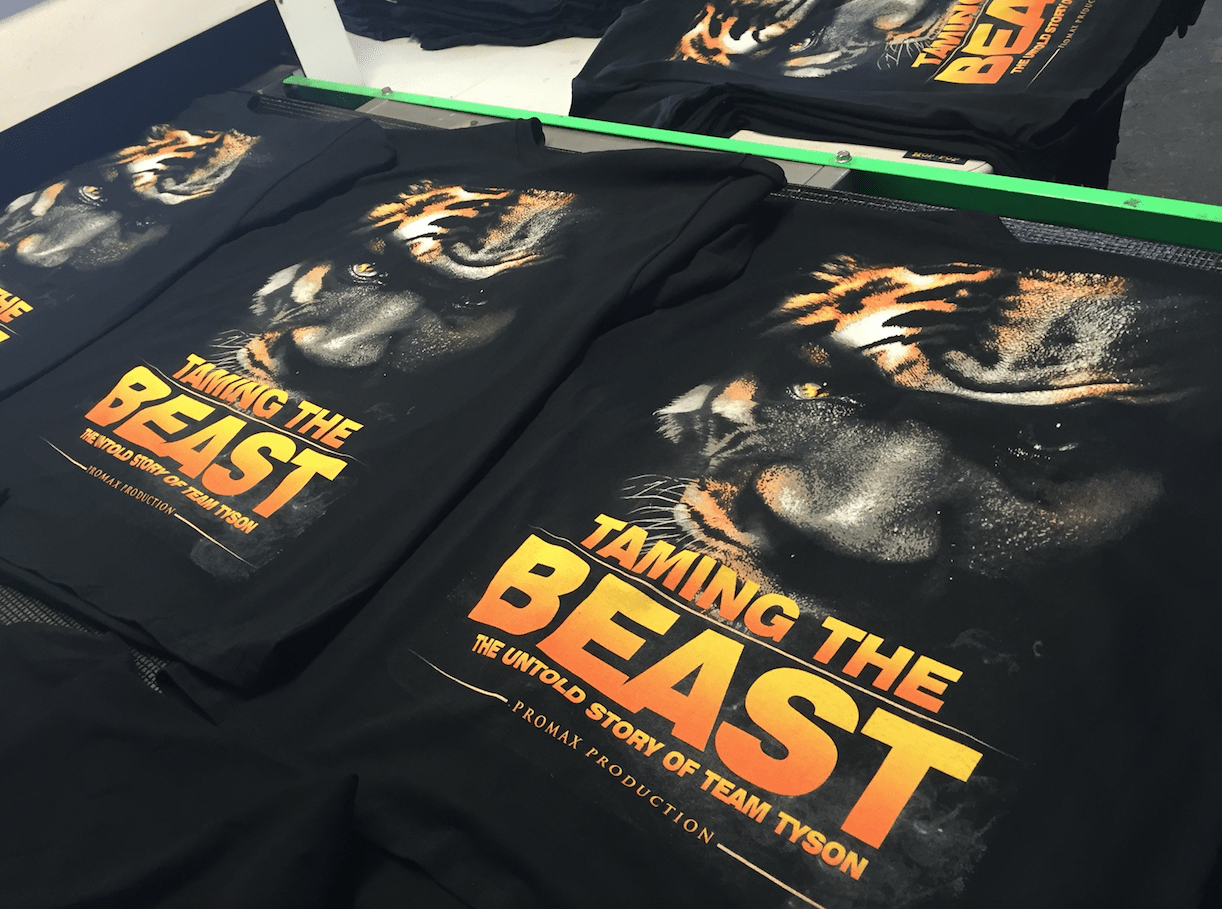Eco-Friendly Custom Screen Printing Options Available
Wiki Article
Display Printing Uncovered: Whatever You Required to Understand About Tee and Garment Printing Techniques
Screen printing is a fascinating technique that combines art with method, supplying countless opportunities for creative thinking. Ready to explore the important components that make display publishing an art type?
The Basics of Display Printing: Exactly How It Works
When you plunge right into display printing, you'll discover it's both a scientific research and an art. At its core, screen printing includes producing a stencil, or display, that enables ink to pass via only in certain locations.Next, you'll blend your inks and prepare your printing surface area. Setting the display over the textile, then utilize a squeegee to press ink with the display onto the garment. This procedure needs accuracy, as you want clear, dynamic prints. After printing, you'll treat the ink with warm, guaranteeing it follows the fabric and lasts via laundries. Each action is essential, and mastering them will certainly raise your screen printing abilities, changing simple garments into one-of-a-kind, meaningful items.
Kinds Of Screen Printing Strategies
When you grasp the basics of screen printing, it's time to explore the different methods that can elevate your styles. One prominent technique is typical display printing, where ink is pushed through a stenciled display.If you're aiming for fine information, think about discharge printing. This method eliminates dye from the material, leaving a soft, vintage appearance. One more alternative is plastisol printing, understood for its durability and dazzling shades, making it a favorite for numerous brand names. Finally, explore halftone printing to produce slope impacts and detailed layouts. Each technique has its unique beauty, so don't be reluctant to try them out to find what fits your style best!
Vital Equipment for Screen Printing
To achieve stunning results in screen printing, having the right tools is fundamental. First, you'll require a sturdy display printing framework, which holds the mesh that transfers your design onto the garment. Next off, buy top quality squeegees; these are essential for applying ink evenly throughout the display. You'll additionally call for a good exposure device to develop your screens, as well as a washout booth for cleaning them after usage. A trustworthy warm resource, like a conveyor clothes dryer or warm press, is essential for treating your prints to assure longevity. Don't fail to remember a correct office, furnished with tables and storage for your materials. Protective gear, such as masks and gloves, will certainly keep you secure from chemicals and inks. With the right tools, you'll be well on your means to generating professional-quality prints.Choosing the Right Inks and Products
When selecting inks and products for screen printing, you require to take into account the kind of ink that works ideal for your job. Consider material compatibility to ensure your styles look last and fantastic long. Likewise, check out green ink choices to make your printing process more sustainable.Kinds Of Screen Inks
Picking the appropriate display ink is crucial for attaining vibrant, resilient prints that meet your project's needs. There are numerous kinds of display inks to check out. Plastisol ink is preferred for its flexibility and simplicity of use, providing exceptional color opacity on dark fabrics. Water-based ink, on the other hand, offers a softer feeling and is green, making it excellent for those seeking to reduce their environmental effect. Discharge inks remove color from the textile, causing a soft, classic appearance but require particular handling. Ultimately, specialty inks, such as metallic or glow-in-the-dark, can include special effects to your designs. Examine your job needs and pick the ink that straightens best with your desired outcome.
Material Compatibility Factors To Consider
Understanding fabric compatibility is vital for achieving high-quality screen prints, specifically because various products react distinctly to different inks. Always check your inks on sample textile to ensure they stick effectively and preserve color integrity. In addition, keep in mind that textile weight and structure can influence the final end result, so selecting the ideal ink and material combo is essential for your job's success.Eco-Friendly Ink Options
Green inks are ending up being a prominent choice for display printers that desire to decrease their environmental impact while keeping top quality. When picking inks, take into consideration water-based inks, which are much less dangerous and simpler to cleanse up compared to conventional solvents.In addition, look for inks made from eco-friendly resources, such as soy or vegetable-based alternatives. By selecting the best inks and materials, you'll not only create spectacular layouts however additionally add to an extra sustainable printing process. Make the button, and your prints will certainly reflect your dedication to the setting!
Preparing Your Style for Screen Printing

File Format Needs
To ensure your style looks sharp and dynamic on material, you'll require to pay close focus to submit format needs for screen printing. Start with vector files like AI or EPS, as they can be scaled without shedding quality. If you use raster pictures, choose high-resolution documents, such as TIFF or PNG, ideally at 300 DPI. Avoid making use of JPEGs, as they can lose clearness when resized. Additionally, make certain your style has a clear history to avoid undesirable white sides on your prints. Ultimately, maintain shade modes in mind; CMYK is common for display printing, so transform your RGB makes accordingly. By complying with these standards, you'll set your artwork up for an effective print.Shade Separation Techniques
Color separation is a vital step in preparing your style for screen printing, and grasping it can greatly enhance your print top quality. You'll require to break your style into specific colors, as each color calls for a separate screen throughout printing. This accuracy not just assures accurate shade depiction however also streamlines the printing procedure.Resolution and Dimension
Achieving the very best results in screen printing starts with guaranteeing your style has the right resolution and dimension. Ideally, your art work ought to be at the very least 300 DPI (dots per inch) for sharp, clear prints. If you make use of reduced resolution, your final product could look unprofessional and pixelated.When it involves size, consider the dimensions of your print area. Style your artwork to match the final print dimension, ideally developing it in the real measurements you'll be printing. This way, you'll prevent any kind of unexpected scaling concerns.
Constantly inspect your style in both vector and raster layouts. Vector graphics can be scaled without shedding high quality, making them suitable for screen printing. Preparing properly will ensure your design looks remarkable on every garment!
Step-by-Step Display Printing Process
Screen printing is a vibrant process that permits you to develop lively designs on different surfaces. To get started, you'll need a display, emulsion, and your selected ink. Prepare your screen by cleaning it thoroughly. Next, use the solution evenly and let it completely dry in a dark location. When completely dry, expose your display to light with your design positioned on it, which will certainly set the emulsion where the light hits, producing a stencil - screen printing kit.After cleaning out the unexposed solution, your screen is ready. Set it up on your printing surface and align your garment below it. Pour ink onto the screen and use a squeegee to push the ink via the pattern onto the fabric. Lift the screen thoroughly and allow the print completely dry. Treat the ink making use of warm to guarantee resilience. That's it! You've successfully display published your design.
Tips for Successful Screen Printing Projects
While you're diving into your display printing projects, bear in mind that prep work is crucial to success. Start by collecting all your products-- inks, mops, displays, and garments. original site A tidy office assists protect against undesirable mistakes, so neat up before you start.Next, verify your art work is high-resolution and correctly sized for your garment. Examine your screen for correct exposure and tidy it completely to stay clear of smudges. When blending your inks, comply with the supplier's guidelines to attain the appropriate consistency.
Throughout printing, use even stress with your squeegee for consistent outcomes. Don't rush; take your time to confirm each print fulfills your standards. After printing, allow your garments dry totally you can try this out prior to taking care of or packaging them.
Finally, always maintain a sample of your benefit future reference. In this manner, you can evaluate your progression and enhance your strategies gradually. Happy printing!

Often Asked Inquiries
How Lengthy Does It Take to Establish a Display Printing Task?
Establishing a display printing job typically takes around 30 mins to an hour. You'll prepare the displays, mix inks, and adjust journalism. The time varies based upon intricacy and experience, so remain arranged!Can I Publish on Various Fabric Enters Utilizing the Same Method?
Yes, you can publish on various fabric kinds utilizing the exact same strategy, but you'll require to change your setups and inks. Some textiles soak up ink differently, so trying out assurances the finest results for each product.What Prevail Mistakes to Avoid in Display Printing?
When screen printing, prevent typical errors like using the wrong ink, disregarding correct direct exposure times, or missing pre-press checks. Always check your arrangement and preserve clean displays to guarantee top quality results each time.Exactly How Can I Effectively Clean and Preserve My Screen Printing Tools?
To appropriately tidy and maintain your screen printing tools, you ought to routinely clean screens with ideal solvents, examine mops for wear, and ensure all devices are kept completely dry and dust-free. Uniformity stops pricey repair work and boosts efficiency.Is Display Printing Ecologically Friendly Contrasted to Other Approaches?
Display printing can be a lot more eco-friendly than various other methods, particularly if you use eco-conscious materials and water-based inks. By choosing sustainable materials and practices, you minimize waste and reduce your effect on the planet.Screen Printing Uncovered: Everything You Required to Know Regarding Tee and Garment Printing Strategies
At its core, screen printing entails creating a stencil, or screen, that allows ink to pass with just in certain locations. Setting the screen over the textile, after that use a squeegee to press ink through the screen onto the garment. One prominent method is conventional screen printing, where ink is pressed with a stenciled display.When picking inks and materials for screen printing, you require to take right into account the type of ink that functions finest for your project.
Report this wiki page